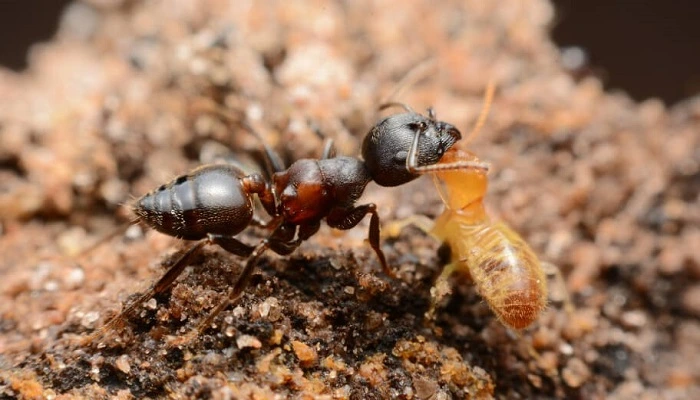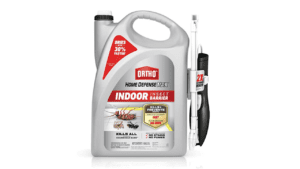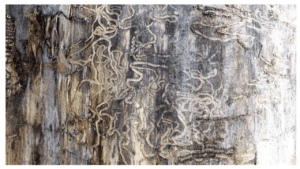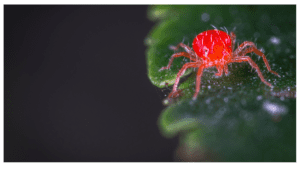The distinctions between termites and ants are insignificant to the untrained eye. The effect on your house, though, is fairly significant.
Continue reading to see whether Its ants or termite swarms.
Key Differences Between Termites and Ants
Ant vs Termite
A closer examination of the insect in question will show noticeable physical variations that make differentiating between a termite and a carpenter ant simple.
You can use your naked eye, a magnifying glass, or even a bright light to examine the insect closely.
@MoussalliMomo
Body Shape
Look closely at the abdominal region when examining the insect’s body shape.
Termites lack a “waist,” and instead have a more rectangular body shape without any center narrowing. The carpenter ant, on the other hand, has a waist that is constricted and narrowly defined.
The Antennae
The feelers of an insect can reveal a lot about it as well. The antenna of a termite is straight and beaded, while those of a carpenter ant are bowed.
The Wings
Each of the two insects’ four wings makes them winged creatures.
You might think, “Well, that’s not useful,” yet in all honesty, this trait is one of the better ways to distinguish between them.
Reproductive Termites have wings that are the same length as their bodies and are of the same size and shape. The forewings on a carpenter ant’s front are longer than the hind wings on its back, and the wings do not appear abnormally long or out of proportion to the ant’s body.
Winged, alate, reproductive caste of a European termite
Termites also lack the same level of tenacity in their wings as ants do. Termite wings are simple to remove. The loose wings can be utilized to spot a termite infestation since they are frequently spotted close to the opening of a termite nest.
You also have to keep in mind that there are many bugs that look like flying termites many of them are harmless, so you have to be sure It’s indeed Termites before your next step.
Color
Reddish or dark-colored ant workers are regularly spotted hunting for food in the open. In contrast, termite workers are clear, pale or creamy white in color, and they stay away from light.
For the most part Termites are rarely noticed except when their colony is damaged.
Causes of Infestation
Close up of termites working
Termites eat cellulose, a form of naturally occurring fiber present in wood and wooden buildings, as their main source of food.
This easily accessible food source is the main reason for termite infestations is .
The following are some typical reasons why termites infest residential buildings:
- Wood piles: You can risk luring termites into your home if you chop firewood or keep logs on your property to toss into your fireplace when you need them. Termites have a great dining source in wood piles and wood sawdust, which can cause them to infest your home. Make sure your supply of firewood is at least 20 feet away from your house if you store it on your property.
- Mulch: Termites can and will infiltrate your home if your outdoor mulch pile touches it. They will enter your home through foundational gaps and cause significant termite damage there. When possible, keep mulch away from your home so it doesn’t come in contact with it directly because mulch is frequently formed of wood chips.
Crumbs, dropped food, mounds of trash, and wood near your home can all draw carpenter ants. Carpenter ants are drawn to wood, just like termites are.
Carpenter ants are unable to consume wood because their jaws are weaker than termites’. Carpenter ants, on the other hand, look for soft, damp wood that they may utilize to make tunnels out of which to nurse their young.
How to control Termites and Carpenter Ants
Effective control methods for termites and carpenter ants differ due to these differences mentioned above. By removing the reasons that attracted them in the first place, you can usually get rid of carpenter ants, but termite management usually requires a specialist.
It is recommended to try to gather a sample for identification if you do find winged insects that resemble ants in your house or other structure. The sample can be used to contrast with images and images found online, or you can show it to a pest control expert.
Conclusion
In conclusion, although both insects are essential to the environment and are pests, they should never live inside or close to your home. Although ants are a hassle, very few of them have the power to really harm your building.
On the other hand, termites are responsible for nearly $5 billion in damages to US homeowners that are not covered by homeowner’s insurance.
To identify whatever flying insect you are looking at, recognition and knowledge are essential.




![Read more about the article 8 Natural Ways To Kill The Bugs At Home [Solved 2022]](https://bugssolution.com/wp-content/uploads/2022/03/8-natual-ways-to-kill-the-bugs-300x171.png)


